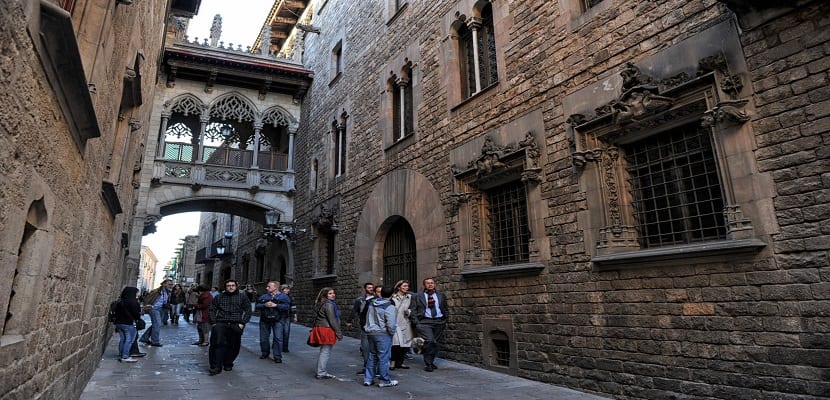
Image | Politic Now
Built on the remains of Barcino, the Roman predecessor of Barcelona, during the Middle Ages Gothic palaces and churches were built that caused the disappearance of most of the Roman legacy.
Located in the Ciutat Vella district, the Gothic Quarter of Barcelona is one of the most beautiful areas of the center and the ideal setting to calmly enjoy the Catalan capital, delighting in the vestiges of its medieval origin. In addition, a large number of restaurants, shops and bars keep the area lively throughout the day.
Next, we take a route through the Gothic Quarter of Barcelona to see the most outstanding tourist attractions. Can you come with us?
Delimited by Las Ramblas, Plaza de Cataluña, Vía Laietana and Paseo de Colón, it is one of the most touristic areas of the city as there are numerous monuments that bear witness to the city's past.
What to see in the Gothic Quarter of Barcelona?
Cathedral of Santa Eulalia
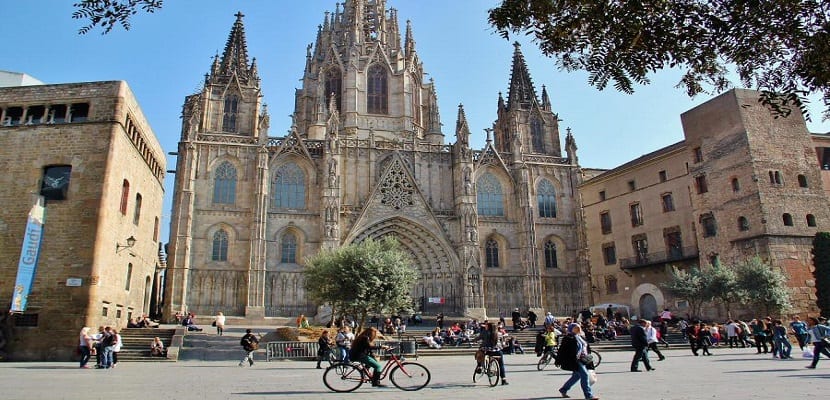
Image | Travel Guides
Barcelona must have learned about Christianity very early since the martyrdoms of San Cucufate and Santa Eulalia, during the persecution of Emperor Diocletian, indicate that there were already Christians at the end of the XNUMXrd century and the beginning of the XNUMXth century AD.
Excavations in the area have uncovered an early Christian basilica that was built in the XNUMXth century. Later, this primitive temple was razed during the Muslim invasion by the Arab leader Almanzor, who set fire to and destroyed the city.
On the remains of that basilica, around 1046 Ramón Berenguer Count of Barcelona ordered the construction of a Romanesque cathedral, on which the current Gothic cathedral would later be built.
The works began in the XNUMXth century and ended in the middle of the XNUMXth. However, in the XNUMXth century a series of works was carried out on the façade and on the side towers, inspired by the initial project drawn in the XNUMXth century.
Despite being in the shadow of the famous Sagrada Familia, the Cathedral of Santa Eulalia is an impressive temple capable of making visitors to Barcelona's Gothic Quarter fall in love.
The main points of interest of the Gothic cathedral are:
- The crypt of Santa Eulalia: Under the main altar is the tomb of the Christian martyr Santa Eulalia, who was executed in 304 AD for defending her faith.
- Cloister: Built between the fourteenth and fifteenth centuries, the cloister of the temple is home to thirteen geese that recall the age of Santa Eulalia when she was martyred.
- Chorus: Its magnificent carved wooden seating is striking. It is one of the most beautiful corners of the cathedral.
- Chapel of Santo Cristo de Lepanto: Here is a Christ to whom the people of Barcelona have a special devotion.
Sant Jaume Square
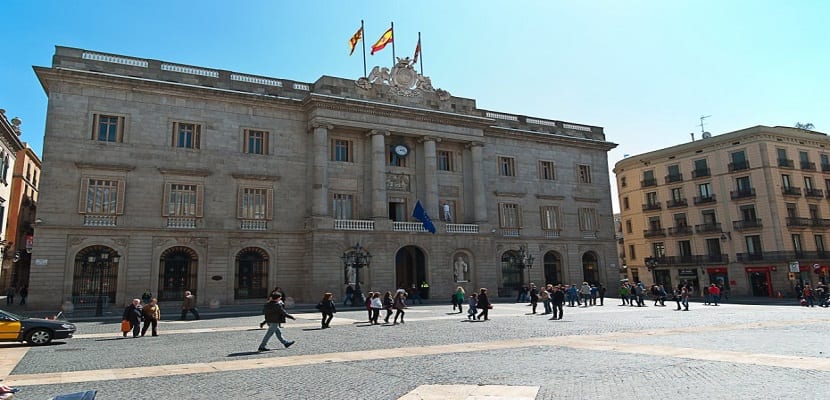
Image | Bautrip
Throughout its history, the Plaza de Sant Jaume has been the venue for multiple events and events such as concerts, exhibitions, celebrations, etc.
It has been the historical and administrative center of Barcelona since ancient times as it houses two of the most important buildings: the Generalitat of Catalonia and the Barcelona City Council.
The Palau de la Generalitat is a beautiful Gothic building that maintains its original design in much of the construction. Subsequently, additions were made, such as the main façade that has a Renaissance aesthetic or the staircase of honor and the statue of Sant Jordi that were included in the XNUMXth century.
As for the City Hall, its façade is neoclassical and has two statues flanking the entrance: that of Jaime I and that of Joan Fiveller.
In the surroundings of the Plaza de Sant Jaume, in the Gothic quarter, there are many narrow streets with places of interest, for example the Carrer del Bisbe that connects the Plaza de Sant Jaume with the Cathedral of Santa Eulalia. Also leaving this square we can find La Rambla or La Boquería a few steps away.
Royal Square
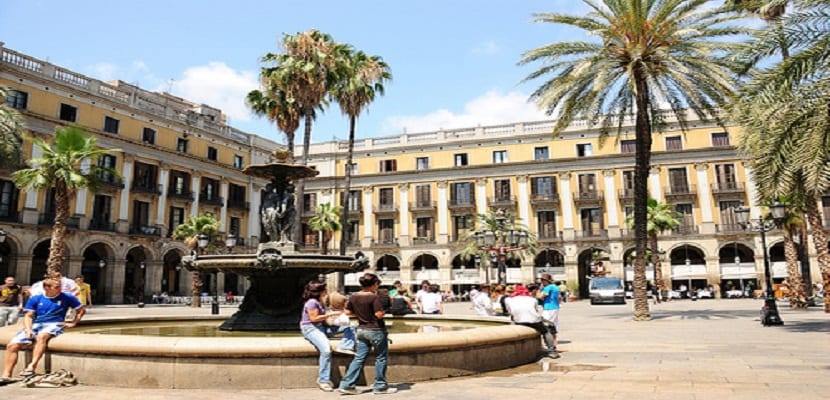
Image | SuiteLife
This is one of the most beautiful squares in the Gothic Quarter of Barcelona to visit. Towards the middle of the XNUMXth century there were certain confiscations that made several religious buildings in the city disappear, as was the case of the Capuchin Convent, which left a large lot free.
In its place arose the Plaza Real designed by the architect Francesc Molina who conceived it as a luxurious square with which to exalt the Spanish monarchy. It has an elegant air accentuated by some pretty street lamps, several palm trees and the fountain of the Three Graces that replaced an equestrian statue of King Ferdinand VII that was never made. The Plaza Real is closed by several arcaded buildings with a stately aesthetic that housed distinguished families from Barcelona. Today it is one of the centers of Barcelona's nightlife.
King's Square
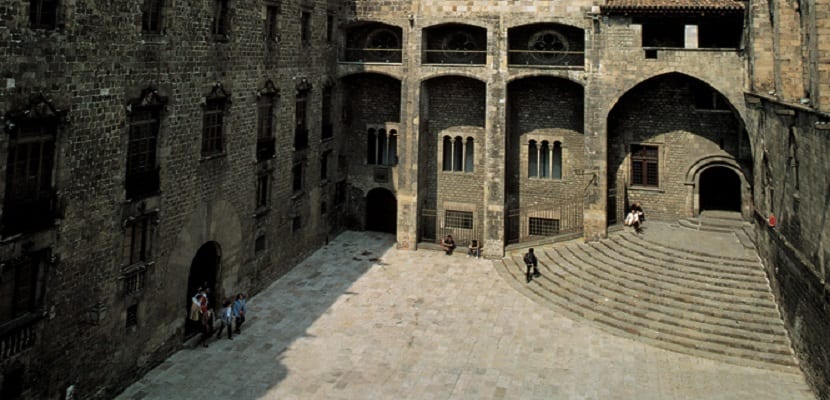
Image | Barcelona Turisme
It is said that it is the place that best exemplifies the medieval past of the city. In the Plaza del Rey is the Palacio Real Mayor, which was the residence of the counts of Barcelona between the XNUMXth and XNUMXth centuries. The Gothic style, therefore, is the one that predominates although on the sides of the building you can see the royal chapel of Santa Ágata from the XNUMXth century and the Palace of the Lieutenant of Renaissance style and belonging to the XNUMXth century. At present it is the headquarters of the Archives of the Crown of Aragon. Closing this harmonious and quiet square we have the Museum of History of Barcelona, which allows us to discover the Roman past of the city.
Jewish quarter

Image | Jewish Link
In the Gothic quarter of Barcelona we can also see the remains of El Call, the old Jewish quarter of the town. This was one of the epicenters of Hebrew culture during the Middle Ages in Europe as philosophy, science, crafts and commerce flourished in its streets.
Medieval Barcelona had two Jewish neighborhoods, the Call Major (bounded by the streets of Banys Nous, Sant Sever, Bisbe and Call today) and the Call Menor (located in Ferran street around the current church of Sant Jaume ) that emerged in the mid-XNUMXth century due to the growth of the community.
The best way to get to know the culture of the Jewish community in medieval Barcelona is to visit the Call Interpretation Center, in the Placeta de Manuel Ribé, where information about the daily life they led and the neighborhood is offered.